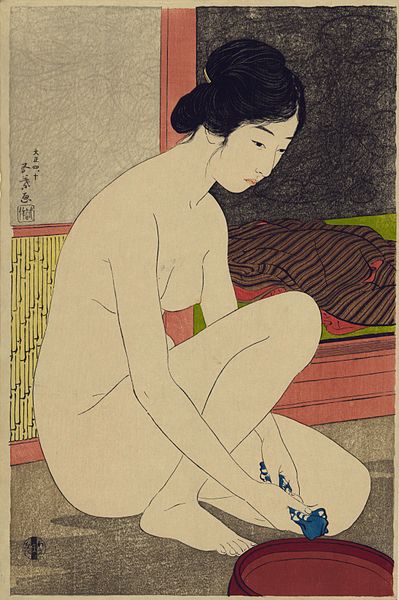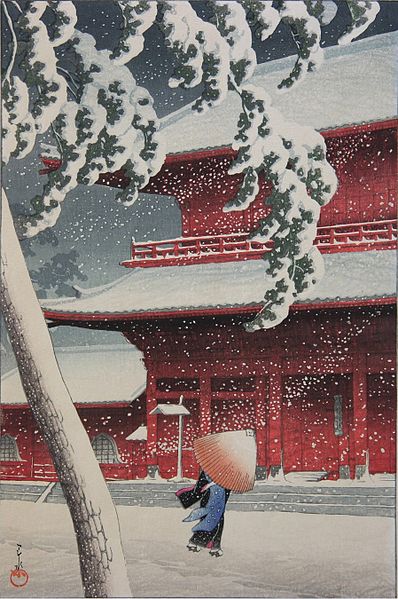Shin-hanga was an art movement in early 20th-century Japan, during the Taishō and Shōwa periods, that revitalized the traditional ukiyo-e art rooted in the Edo and Meiji periods. It maintained the traditional ukiyo-e collaborative system where the artist, carver, printer, and publisher engaged in division of labor, as opposed to the parallel sōsaku-hanga movement.
Yokugo no onna (Woman at Her Bath), by Hashiguchi Goyō (published Feb. 1916). One of the first shin-hanga published by Watanabe Shozaburo.
Hikari umi (Glittering Sea), by Hiroshi Yoshida (1926)
Shiba Zōjōji, by Kawase Hasui (1925)
Two Cockatoos on Plum Blossom Tree, by Ohara Koson (c. 1925–1935)
Ukiyo-e is a genre of Japanese art that flourished from the 17th through 19th centuries. Its artists produced woodblock prints and paintings of such subjects as female beauties; kabuki actors and sumo wrestlers; scenes from history and folk tales; travel scenes and landscapes; flora and fauna; and erotica. The term ukiyo-e translates as 'picture[s] of the floating world'.
Tokugawa Ieyasu established his government in the early 17th century in Edo (modern Tokyo).Portrait of Tokugawa Ieyasu, Kanō school painting, Kanō Tan'yū, 17th century
The Hikone screen may be the oldest surviving ukiyo-e work, dating to c. 1624–1644.
Early woodblock print, Hishikawa Moronobu, late 1670s or early 1680s
Standing portrait of a courtesanInk and colour painting on silk, Kaigetsudō Ando, c. 1705–10








